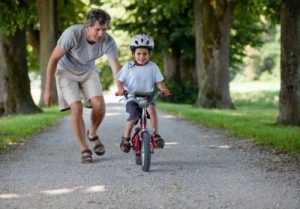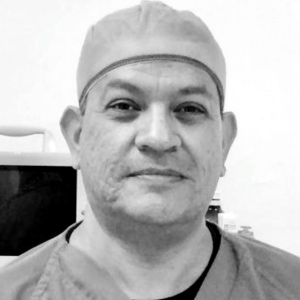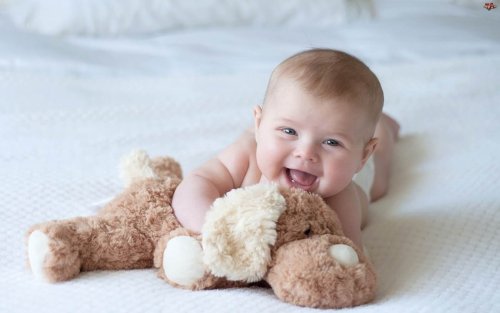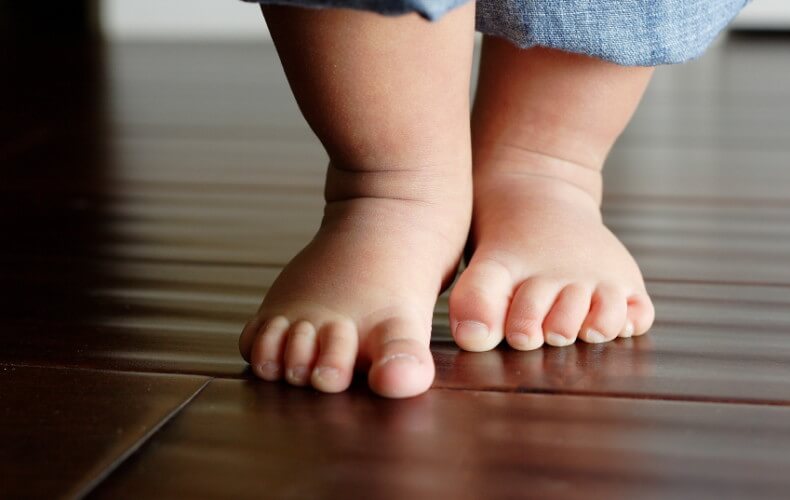How to Develop Gross Motor Skills in Children


Reviewed and approved by the doctor Nelton Ramos
Gross motor skills require the use of the large muscles in the legs, arms and torso. These skills include walking, running, playing sports and performing other physical activities. In this way, we can see that they are clearly different from fine motor skills.
Under normal circumstances, all children develop their large muscles through play and exercise. However, if this doesn’t occur because of one or more difficulties, children need stimulation assistance with the help of a specialist.
Normally, gross motor skills begin to be fine-tuned during early childhood. Their development begins when the baby first raises his head, and reaches a key point when the baby crawls and walks.
When walking, going up and down stairs, crawling, jumping, running, moving the arms and stretching the torso, children acquire mastery of their body in general.
Failure to achieve some control over gross motor skills can cause problems in areas such as coordination, for example.
In other words, a baby or child with gross motor difficulties may have trouble sitting, getting up or being in a school environment, where he will be seen as a clumsy child and thus may suffer from other problems such as isolation or low self-esteem.
A key to understanding gross motor skills is to understand what the body can do.
-Erica Patino-

Gross motor skill milestones
The development of gross motor skills is a point to evaluate during a child’s growth, and it does not only mean that the child learns to walk.
The importance of these skills goes beyond walking, because gross motor skills are the gateway to other activities that involve body mastery, explains Kate Kelly, a writer specializing in parental care.
At around 4 months of age, a baby can start to lean on his elbows and keep his head upright. Over time, he can roll over onto his belly on his own. After 6 months, the baby begins to sit up and exercise his torso muscles. Around 7-10 months, he begins to crawl.
Thereafter, babies use the muscles in their arms and legs to support and lift themselves up until they reach 12 months of age and begin to walk.
But the development of their gross motor skills does not end there. After walking, children learn to run, jump and even balance for short periods of time.
How to help children develop gross motor skills
The answer is very simple: let children play freely and they will develop their gross motor skills.
When they are just babies and are learning to hold their heads up by themselves or to turn their body around, you just have to be attentive to their movements so they don’t hurt themselves, and to stimulate them with different exercises to strengthen their body.
When they are starting to learn how to crawl, babies can be left on the floor for a period of time. Place them face-down and let them start using their arms and legs to start to stand up.
Little by little, your baby will begin to crawl, and when he starts to walk, you must motivate him to continue playing and having fun.
There are hundreds of games that help children (and adults) to have fun and coordinate their bodies. Here are just a few:

Play hide and seek
Covering your face with your hands and playing “peekaboo” is one of the first activities a child enjoys. As he begins to grow and learns to walk, playing hide and seek becomes an increasingly elaborate and fun game. It develops skills that require being able to run.
Dance for a while
This is an excellent activity for both exercise and recreation. You just have to motivate them a little. Dancing for a while to the rhythm of music is a pleasant and complete exercise that all human beings can enjoy throughout their lives.
Dancing not only helps children coordinate the movement of their arms and legs, but also, like any exercise, provides a sense of well-being.
Swing or play hopscotch
It seems incredible, but activities as simple as swinging or playing hopscotch help children develop balance and coordination, since both activities require using the legs to balance one’s body weight.
And in general, being in a playground where the child can jump off a slide or climb the monkey bars helps him develop his gross motor skills.
Gross motor skills require the use of the large muscles in the legs, arms and torso. These skills include walking, running, playing sports and performing other physical activities. In this way, we can see that they are clearly different from fine motor skills.
Under normal circumstances, all children develop their large muscles through play and exercise. However, if this doesn’t occur because of one or more difficulties, children need stimulation assistance with the help of a specialist.
Normally, gross motor skills begin to be fine-tuned during early childhood. Their development begins when the baby first raises his head, and reaches a key point when the baby crawls and walks.
When walking, going up and down stairs, crawling, jumping, running, moving the arms and stretching the torso, children acquire mastery of their body in general.
Failure to achieve some control over gross motor skills can cause problems in areas such as coordination, for example.
In other words, a baby or child with gross motor difficulties may have trouble sitting, getting up or being in a school environment, where he will be seen as a clumsy child and thus may suffer from other problems such as isolation or low self-esteem.
A key to understanding gross motor skills is to understand what the body can do.
-Erica Patino-

Gross motor skill milestones
The development of gross motor skills is a point to evaluate during a child’s growth, and it does not only mean that the child learns to walk.
The importance of these skills goes beyond walking, because gross motor skills are the gateway to other activities that involve body mastery, explains Kate Kelly, a writer specializing in parental care.
At around 4 months of age, a baby can start to lean on his elbows and keep his head upright. Over time, he can roll over onto his belly on his own. After 6 months, the baby begins to sit up and exercise his torso muscles. Around 7-10 months, he begins to crawl.
Thereafter, babies use the muscles in their arms and legs to support and lift themselves up until they reach 12 months of age and begin to walk.
But the development of their gross motor skills does not end there. After walking, children learn to run, jump and even balance for short periods of time.
How to help children develop gross motor skills
The answer is very simple: let children play freely and they will develop their gross motor skills.
When they are just babies and are learning to hold their heads up by themselves or to turn their body around, you just have to be attentive to their movements so they don’t hurt themselves, and to stimulate them with different exercises to strengthen their body.
When they are starting to learn how to crawl, babies can be left on the floor for a period of time. Place them face-down and let them start using their arms and legs to start to stand up.
Little by little, your baby will begin to crawl, and when he starts to walk, you must motivate him to continue playing and having fun.
There are hundreds of games that help children (and adults) to have fun and coordinate their bodies. Here are just a few:

Play hide and seek
Covering your face with your hands and playing “peekaboo” is one of the first activities a child enjoys. As he begins to grow and learns to walk, playing hide and seek becomes an increasingly elaborate and fun game. It develops skills that require being able to run.
Dance for a while
This is an excellent activity for both exercise and recreation. You just have to motivate them a little. Dancing for a while to the rhythm of music is a pleasant and complete exercise that all human beings can enjoy throughout their lives.
Dancing not only helps children coordinate the movement of their arms and legs, but also, like any exercise, provides a sense of well-being.
Swing or play hopscotch
It seems incredible, but activities as simple as swinging or playing hopscotch help children develop balance and coordination, since both activities require using the legs to balance one’s body weight.
And in general, being in a playground where the child can jump off a slide or climb the monkey bars helps him develop his gross motor skills.
All cited sources were thoroughly reviewed by our team to ensure their quality, reliability, currency, and validity. The bibliography of this article was considered reliable and of academic or scientific accuracy.
- Lawther, J. D. (1983). Aprendizaje de las habilidades motrices. Paidós.
- Magalita Armijos. (2012). La Motricidad gruesa.
- Zausmer, E. (1991). Estimulación del desarrollo de la motricidad gruesa. Síndrome de Down: Hacia Un Futuro Mejor. Guía Para Los Padres.
This text is provided for informational purposes only and does not replace consultation with a professional. If in doubt, consult your specialist.








